By Janis D. Gioia, MAEd and Elise C. Gioia
Coloring calms anxious kids (and adults) helping them manage stress and anxiety.
Over the past few years coloring has become amazingly popular, making headlines from wellness publications to CNN.
But coloring is nothing new.
The first coloring books were published in the late 1800’s, before Crayola started making crayons.
It’s only recently that the practice has gained attention as a simple strategy to calm an anxious mind, part of the practice of mindfulness.
My interest in mindfulness began this fall when I began participating in a research study at the Cleveland Clinic on how Mindfulness Based Stress Reduction (MBSR) can improve physiological and psychological health.
In addition to yoga and meditation, I found that coloring as a way to practice mindfulness, reduced my stress and anxiety.
Mindfulness, quite simply, means focusing on the here and now…not ruminating about the past or worrying about the future. Mindfulness, when coloring means you are fully aware of the present moment, one breath, one crayon and one design at a time.
Brenda Richards, OTR/L a children’s occupational therapist in Solon, Ohio explains, “Repetitive motions, like coloring, can soothe anxiety and elicit a relaxation response. The reaction allows a lower heart rate, blood pressure and less muscle tension. Repeating fine motor movements can allow the brain to focus on returning to that movement rather than to anxious thoughts.”
Coloring, in a sense, becomes a form of meditation. Focusing on colors, lines, shapes and patterns using various pressures and different strokes with mediums like crayons, pencils or markers becomes meditative, relaxing busy, anxious minds.
I’ve found the smooth feeling of the crayon or marker as it makes contact with paper to be very relaxing.
“There’s a science behind coloring which helps to relieve our minds from present stressors around us,” says Rachel Swenson author of Big and Little Coloring Devotional for Kids and Adults. “Coloring shifts our mind from the present issue and releases endorphins.”
Endorphins, those feel-good chemicals, give our brains a gentle boost…like a candy bar, without the sugar or calories.
Benefits of coloring for kids with anxiety or special needs:
- Reduces anxiety, stress and depression.
- Provides a break from video games and electronic devices.
- Focuses thoughts in a mindful-based practice.
- Encourages a quiet, meditative time.
- Improves fine motor skills which helps children with printing and cursive writing.
Coloring as a form of art therapy:
- Coloring allows children to express themselves. It is an outlet for emotions and a soothing way for them to release energy.
- Coloring is accessible for all children, regardless of ability or age. It can be easily adapted for children with special needs.
- Coloring empowers children by giving them the chance to color and create something new…the process results in a product that they can share with pride.
- Coloring is a form of play…and today’s children often don’t play enough…for older children, especially, coloring reminds them of their younger childhood days, eliciting feelings of being carefree.
Ways to Make Coloring Calming for Kids
Set the Intention.
Like all mindfulness-based practices, set the intention to color with the child, explaining that coloring can help them self-soothe.
You might say, “I see that you are worried about your math test. Why don’t we take a coloring break?”
When the child is finished coloring ask how the activity made them feel…get them to reflect on the experience and observe, “Since you just found that coloring made you feel happier and more relaxed, let’s remember to try it again when you are feeling anxious or worried.”
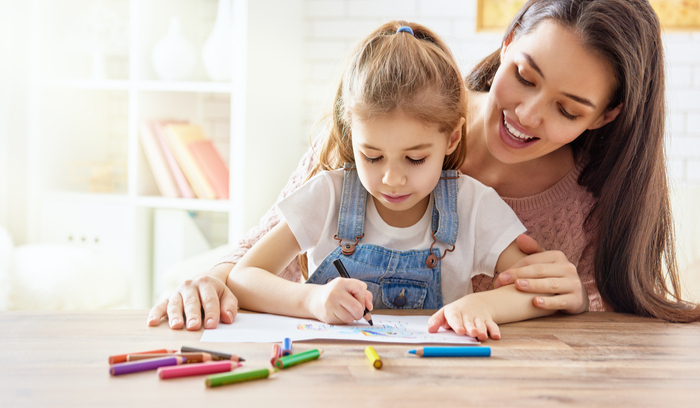
Color with your child whenever possible.
The Big and Little Coloring Devotional is unique because the book includes side-by side pages which allow adults and children to color together.
“The big reason Rachel Swenson and I created The Big and Little Coloring Devotional is that it allows me to be truly present with my daughter,” shares Jacy Corral, the book’s illustrator. “Sitting down together, face to face, sharing an activity that leaves space to just chat and enjoy each other’s company is beautiful, restful and dare I say, fun!”
Jacy continues, “My daughter’s entire demeanor changes when she can tell that I’m 100% present with her. My phone is nowhere to be seen, I’m not inching away to start the dishes. I’m just there with her. She relaxes, opens up and thinks aloud with me. I couldn’t ask for anything more as a parent.”
All children desire connection with the adults in their lives, especially those with anxiety, depression, autism or other special needs. Coloring is a great way to be present with your child. It helps to create caring connections and often leads to meaningful conversations.
Tips for Making Coloring Anxiety-Reducing
Let Your Child Take the Lead.
“The intention of coloring should depend on the child and their willingness to find relief in their struggle with stress,” says Mary Maleski, Owner of Coloring Book Solutions, a coloring book publishing company.
Brenda Richards agrees. “I think for coloring to be a calming, anxiety-reducing task it is important to follow the child’s lead. The style of coloring book is less important that the calming act of coloring.”
Crayons, Markers or Colored Pencils?
Provide options but leave the choice up to your child.
Maleski’s company finds that children enjoy coloring with crayons because of their size and vibrant color choices. As an occupational therapist, Richards likes colored pencils because they can be sharpened to a nice point and accurately used in small spaces.
As an artist, Corral also believes that materials should be up to the child. She says, “I’ve noticed that some children are more comfortable with crayons, not because they like them more, but because they haven’t been offered anything else.”
“Mess avoidance prevents parents from offering markers to their kids. I think it’s such a shame since kids love markers, and I would challenge parents to introduce them sooner than later. Markers do not need to be sharpened. The most loved colors do dry out the quickest, but always listen for the “click” of the cap to extend their lives.”
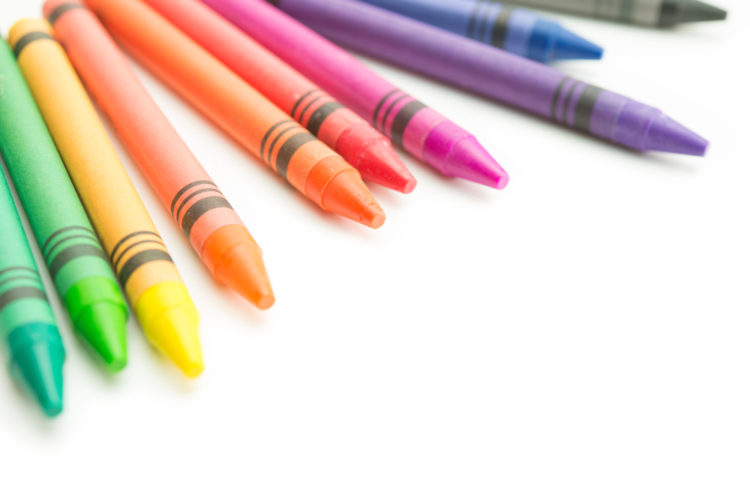
Adapting Coloring for All Abilities:
For little ones:
Crayons and markers provide the most independence, since they don’t need sharpening.
Select an assortment of coloring books with large images and fewer details.
For children with special needs:
Coloring can be challenging for children who struggle with grip and fine motor skills.
Here are some simple ways to make coloring easier for children with special needs.
- Try Jumbo Crayons (Crayola), GiBot Finger Crayons (non-stick, non-toxic and safe if injested—with a hole that makes them safe if accidentally swallowed.)
- Occupational therapists recommend using Coban Self-Adhesive Wrap (available at drug stores) to wrap around crayons, pencils and markers to make them easier to grip.
- Try pencil grips like The Writing Claw which make it easier for a child to use a crayon, marker or pencil.
- Visit The Pencil Grip company’s online store for great sensory products for coloring and learning.
- Use a clip board to help hold the coloring book or page steady.
- If you’d like to add more sensory input consider scented crayons or markers or diffusing essential oil while your child colors.
- Children with autism spectrum disorders may be overwhelmed by too many coloring choices. You may want to limit the options to make their self-selection of colors/mediums easier.
- Be open to children’s choices. One of my students with autism happily colored everything red, all the time, for the entire year.
For children who worry about broken crayons or coloring outside the lines:
Broken crayons may be upsetting for some children on the autism spectrum or those with low-frustration tolerance.
Using thicker crayons or markers may help.
Show them that broken crayons still color….getting them to hold an oddly shaped crayon may initially be a challenge, but with time they may adjust.
Talk about it…explain that coloring is a form of art…they can choose to stay in the lines or go beyond the lines to make the picture their own masterpiece.
Selecting larger, more simple and less detailed coloring pages is often less stressful for young children, children with special needs or those who are anxious. (Highly detailed pages with intricate designs can cause children stress…they can be too much visual sensory overload and become overwhelming to color.)
If your child becomes frustrated, stop the activity.
Activities like knitting or jewelry making are also repetitive and soothing. If these don’t work for your child consider more physical rhythmic activities like rocking, swinging or hula-hooping.
Taking a coloring book and crayons can be a lifesaver for doctor’s offices, restaurants and other places where your child might be anxious or have a hard time waiting.
We wish you and your child a blessed and colorful new year!
Peace and warm wishes, Jan and Elise

By signing up, you’ll also receive your free guide with 20 ways to comfort your child…mind, body and spirit.

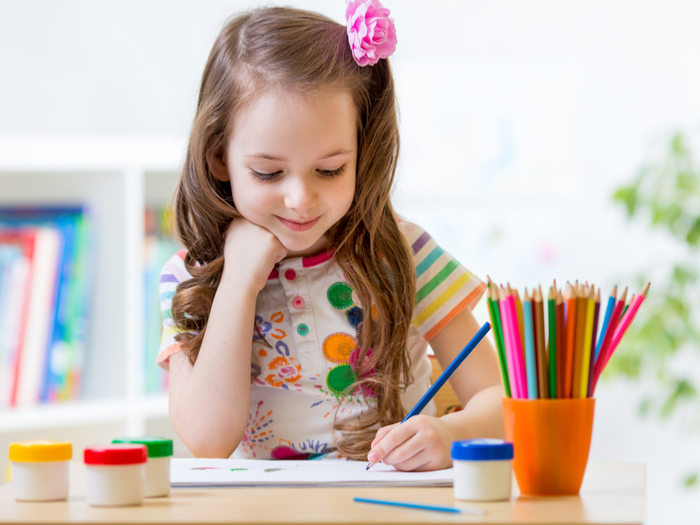
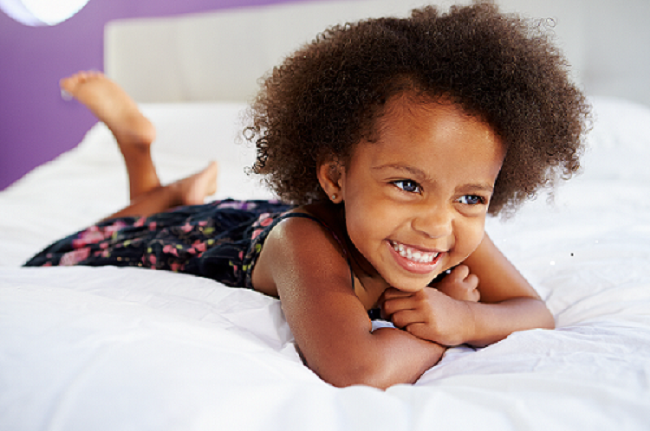
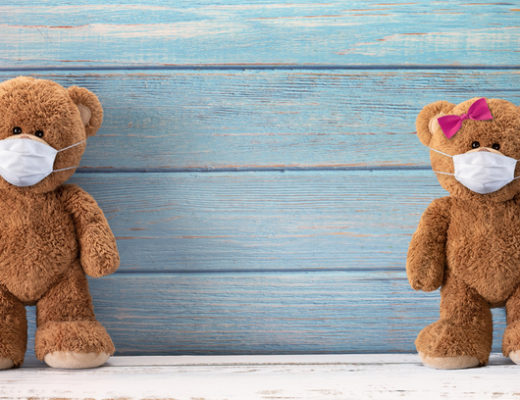
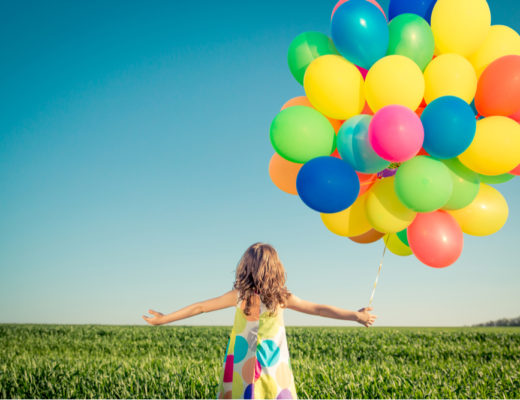

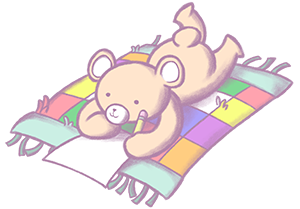
 in Ohio
in Ohio
2 Comments
I love this article! Both of my girls love it when I sit down and color with them, but I am often too distracted to do so. This was a good reminder that sometimes the housework (or my school work) can wait, and I need to be present with my children.
Thank you so much! I remember when my children loved when I sat and colored with them too. Those coloring conversations can be really special. Happy New Year, Jan